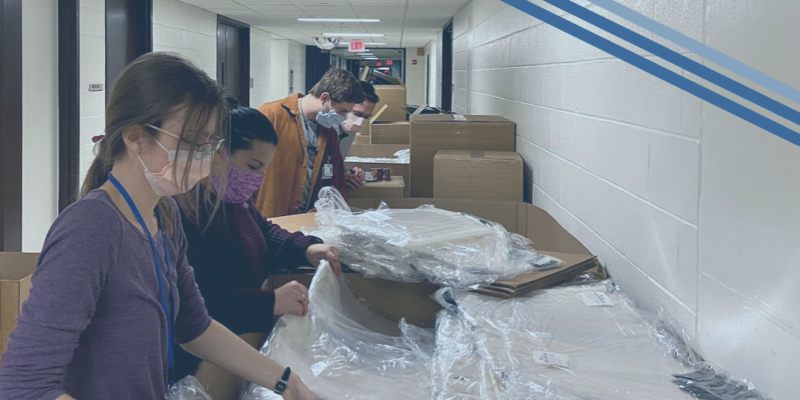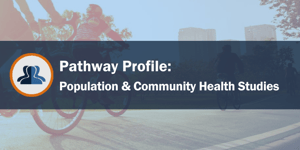Protecting the Vulnerable: Bringing PPE to Wisconsin Nursing Homes
May 29, 2020 Posted by AHW Endowment

To learn more about this funded project, click here.
It was late February when positive cases of the coronavirus were first reported at Life Care Center, a nursing home in Kirkland, Wash. In the days that followed, news headlines highlighted the rapid increase in individuals who became infected — and the resulting deaths.
The outbreak was a significant point in United States’ entrance into the fight against COVID-19, and gave Americans a real-time look at something that epidemiologists like the Medical College of Wisconsin’s Dr. Silvia Munoz-Price already knew: That facilities such as nursing homes are extremely vulnerable to the spread of infections.
"The experience of the Life Care Center provided evidence that a single case of COVID-19 in a long-term care facility may result in overwhelming spread of the disease among residents, health care workers, visitors, and other caregivers,” Munoz-Price says.
As enterprise epidemiologist for Froedtert & the Medical College of Wisconsin, an infectious disease physician, and professor of medicine, Munoz-Price has long been interested in infection control at vulnerable facilities like nursing homes. Her work has included partnership in a post-acute care coalition and a collaboration with the State Division of Public Health on efforts to prevent multidrug resistant organisms across nursing homes in Wisconsin.
In responding to a virus new to our population, experts like Munoz-Price recognized that nursing homes faced a special challenge. When operating with scarce resources while caring for a population at highest risk for negative outcomes if infected, what could protect residents and workers alike?
An important answer was to equip facilities with appropriate personal protective equipment (PPE). But in the face of a national shortage, access was limited and what was available was unaffordable for most. Without PPE, workers and residents would be at increased risk of exposure and infection.
Through a $489,059 AHW grant, a collaborative research team led by Munoz-Price is responding, working with nursing home organizations across the state to provide facilities with critically needed personal protective equipment (PPE) while also evaluating the impact in reducing the incidence and spread of COVID-19. The project is one of 17 grants awarded in early April 2020 through AHW’s Urgent Response to COVID-19 funding opportunity.
“We want to protect the workers from getting exposed to the virus from patients or other workers,” Munoz-Price explains. “But we also want to protect the patients from getting exposed from workers who may be carrying the virus without knowing. And we want to prevent workers from taking the virus from one patient to another.”
So far, the project has delivered more than 39,000 face shields and 32,000 goggles to more than 340 facilities statewide. Delivery of thousands of masks is underway.
“We’re very fortunate that we were able to find local partners like Olympus Group and HUSCO to produce this PPE,” says Munoz-Price. “Thus we don’t have to depend on the national supply of PPE during a major shortage.”
Following the delivery of PPE to facilities, Munoz-Price and the research team are conducting regular follow-up, ultimately aiming to evaluate the impact of PPE in preventing the incidence and spread of COVID-19 among residents and workers.
The evaluation will be complex.
“We are identifying facilities outside of Wisconsin which may not get as much PPE as facilities in Wisconsin, and will compare the rate of infections both at the level of patients and workers,” Munoz-Price says. “But it’s a complex problem. There are variables based on the type of patients they have, the resources of the facility, whether employees go from one facility to another one, if employees themselves live where more COVID-19 cases are identified. There may be multiple variables playing a role.”
These variables across communities have long been recognized to compound and result in the health disparities identified across communities today – disparities that have become more evident throughout the pandemic.
In aligning with AHW’s mission to partner academic insight with community expertise and need, Munoz-Price is pushing forward to protect the most vulnerable of Wisconsin residents while advancing understanding and knowledge of how to respond to COVID-19.
“We want to see what can be learned,” Munoz-Price adds. “And we want to protect elderly people and health care workers in our communities.”
Project Details
| Project Title: |
The Effectiveness of Personal Protective Equipment (PPE) Across Wisconsin Nursing Homes |
| Award: |
$489,059 |
| Award Date: |
April 2020 |
| Principal Investigator: |
Silvia Munoz-Price, MD, PhD, Medicine |
| Co-Investigators: |
Liliana Pezzin, JD, PhD, Institute for Health and Equity; Edmund Duthie, MD, Medicine |
| Collaborators: |
Diane Ehn, MS, Froedtert Health |
| Project Description: |
Delivering and measuring the effectiveness of personal protective equipment (PPE) in nursing homes across Wisconsin |
Find this project in the AHW Funded Project Database


.png?width=300&name=Untitled%20design%20(7).png)

